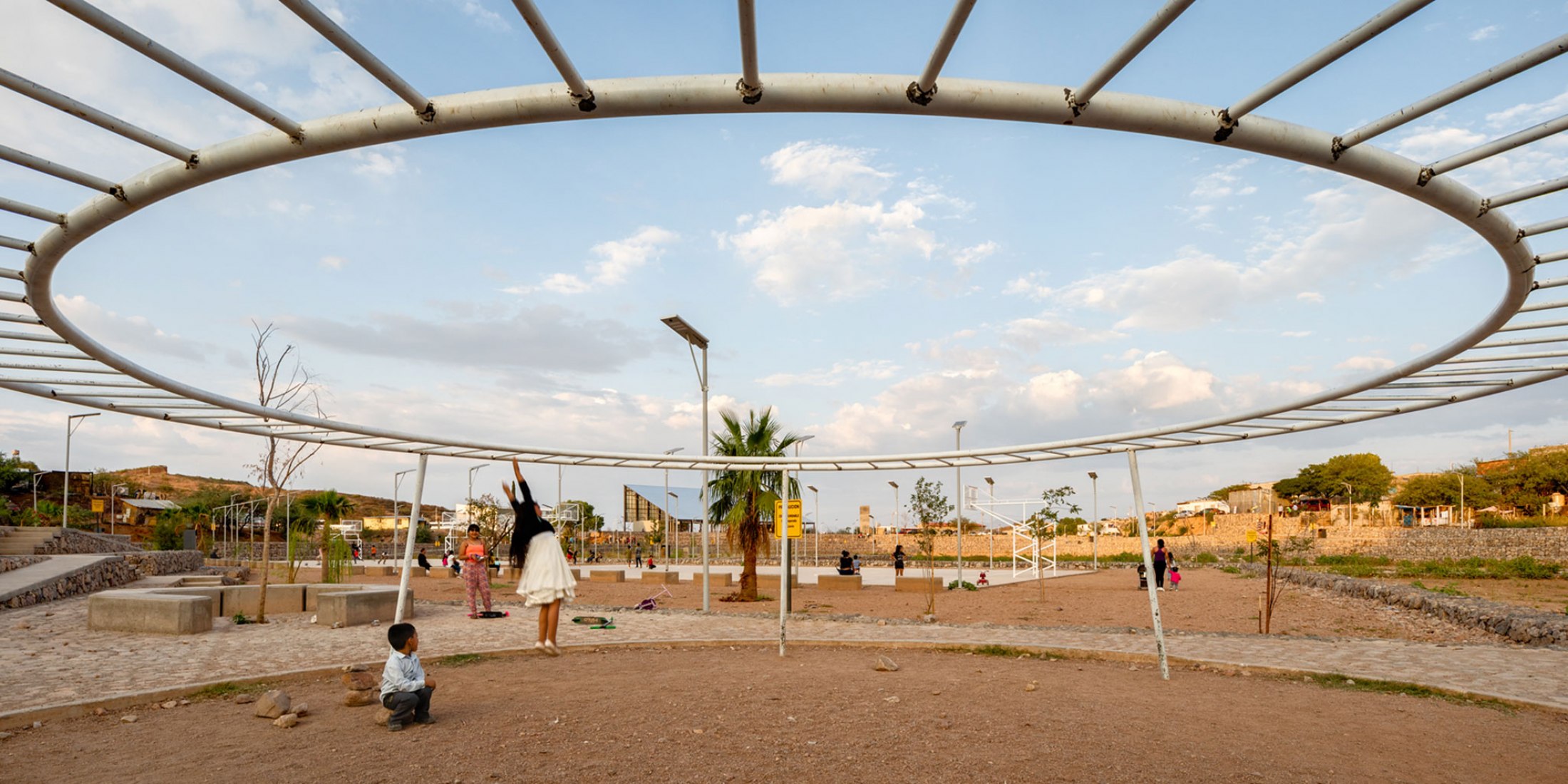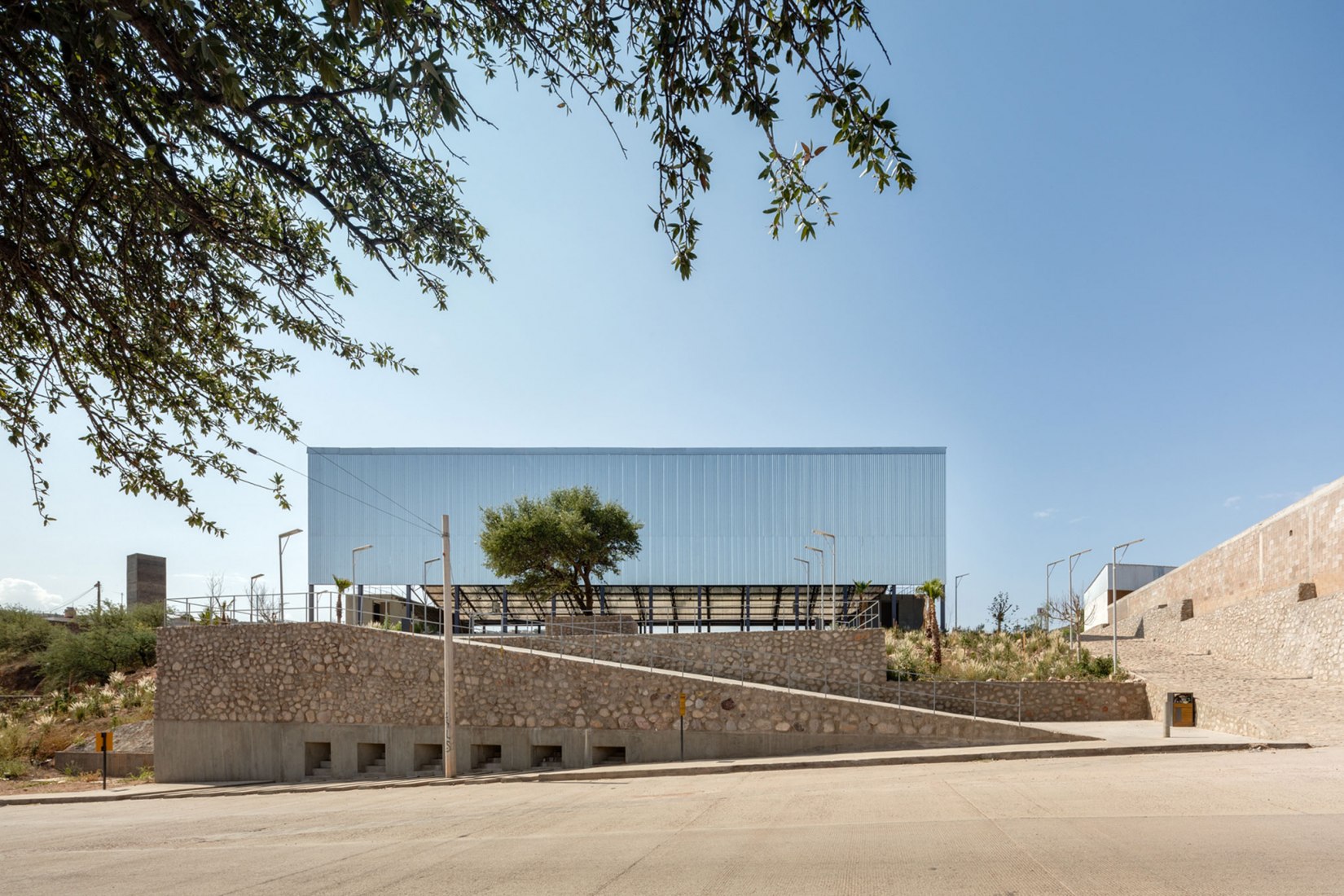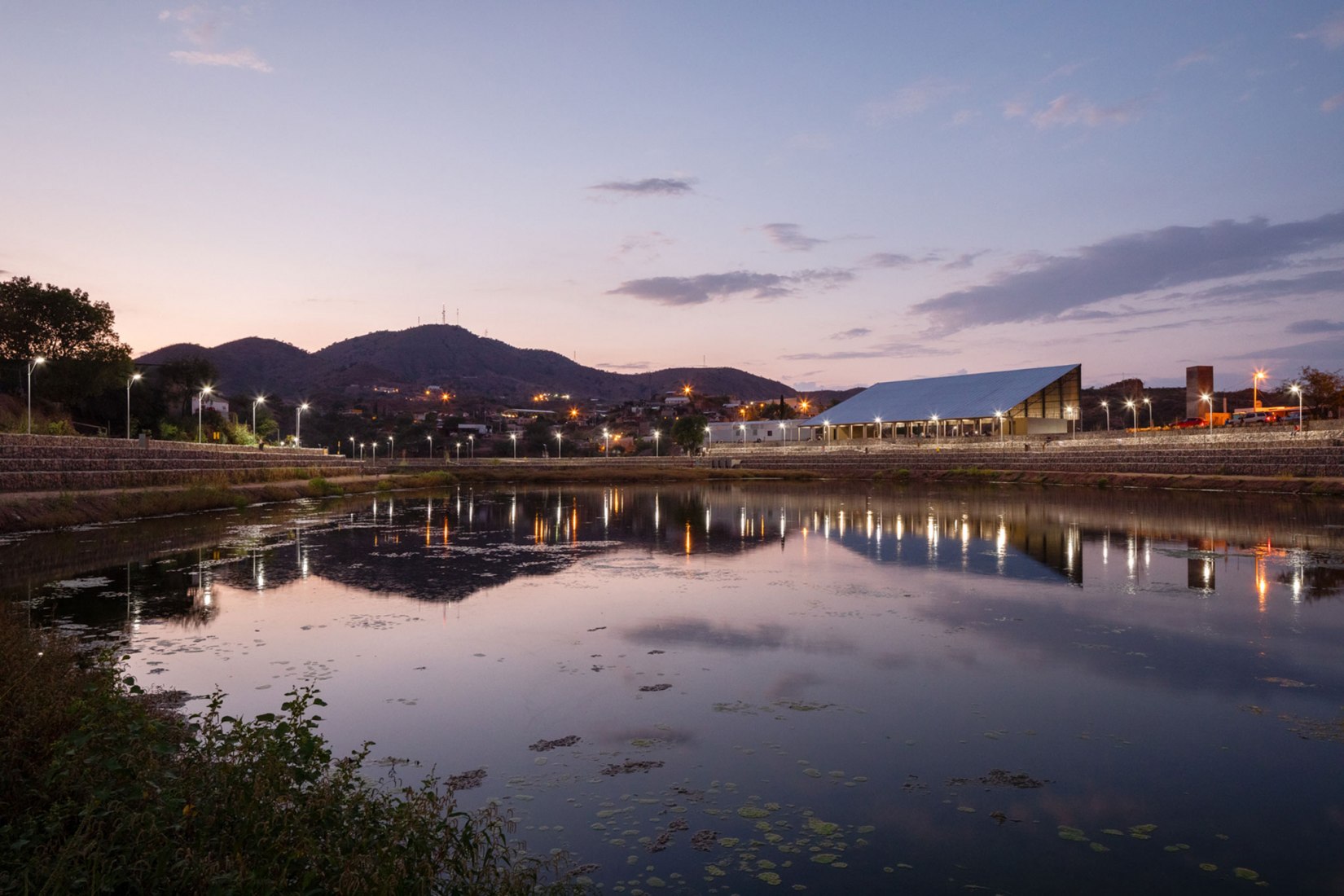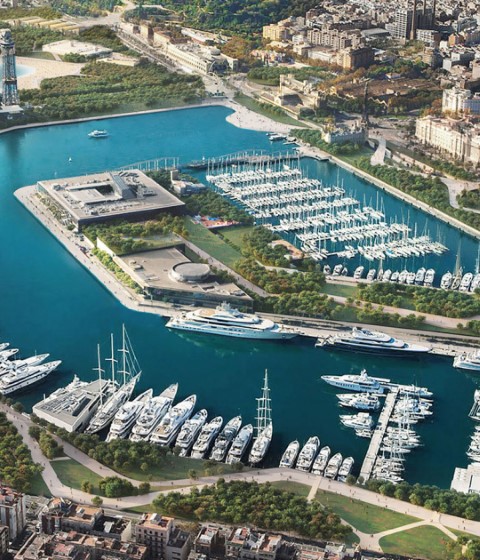All the elements are distributed around the water, which is the symbol of the community and centrality of the area. The sports fields, gardens, and playgrounds are located between platforms and a perimeter wall that solve the problems that can be caused by cyclical flooding.
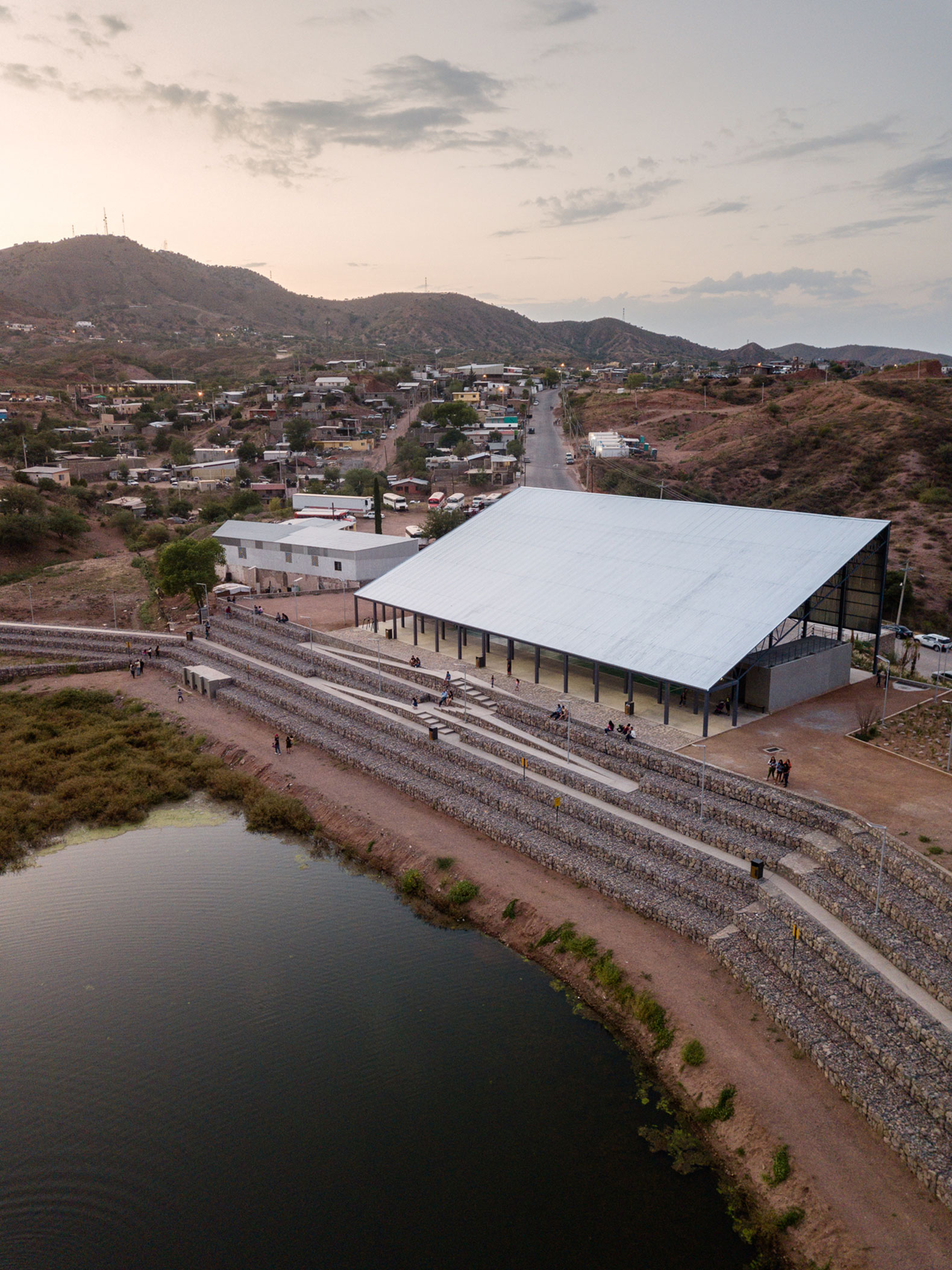
Parque Represo Colosio by Taller Capital. Photograph by Rafael Gamo.
Description of project by Taller Capital
The Colosio Dam in the city of Nogales, Sonora, is an 8 ha project promoted by the Secretary of Agrarian, Territorial and Urban Development (SEDATU) of the Government of Mexico and developed by the Coordination of Linking of the Faculty of Architecture of the UNAM through Taller Capital. The initial approach was to build a park in an area of irregular settlements, apparently free and adjacent to a body of water. From the analysis it was found that this space was subject to constant flooding during the rainy season, putting the surrounding population at risk with landslides on the banks of the body, damaging the curtain of the dam every year and interrupting the mobility and possibility of evacuation of the inhabitants of the place.
Based on a careful reading of the context (a mountainous site, in which the constructions are light, with a wealth of desert flora and an imperative need for meeting and recreational spaces), a series of project strategies emerge to address each of the problems detected.
1. Containment of the edges of the water body and consolidation of the dam curtain.
2. Definition and design of the space to allow the runoff of water from the mountain range to flow.
3. Determination of specific spaces to receive floods during the rainy season and to function as places for sports and recreation during the dry season.
4. Creation of a perimeter circuit and a bridge to facilitate the mobility and evacuation of the inhabitants in case of need.
5. Design a covered space that will be a landmark of identity for the inhabitants of the place.
One of the most important requirements of the project, which began its design in April 2019, was to propose a fast-track system, as the work would have to be completed before April 2020. In order to implement the strategies listed above, a reduced palette was chosen, favouring the construction systems and materials of the region. The containments and reinforcement of the dam were built with gabion filled with stones from the area, and the pavements and walkways are made of compacted tucuruguay (the tepetate of the region) and polished concrete, respectively.
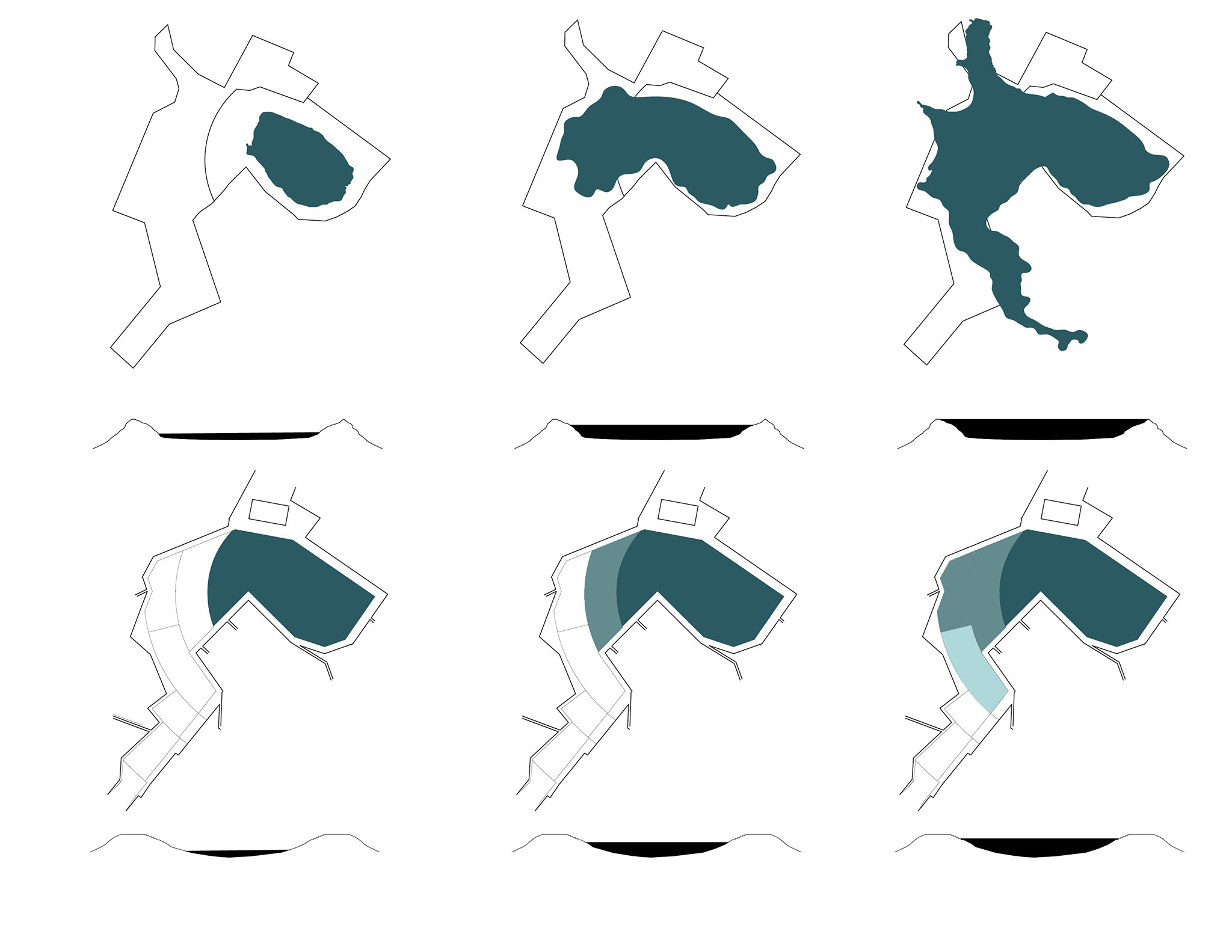
Flood diagram. Parque Represo Colosio by Taller Capital.
The playground equipment was designed with tubular steel and the covered multi-purpose space was designed with a metal structure (PTR and open web reinforcement) and a corrugated sheet metal roof with an aluminium finish. The interior stands cover two service areas: toilets and administration. These modules are made of flattened cement-sand blocks. Finally, the squares around the covered space are paved with local stone. All of these are bordered by gardens of local cacti. The hydraulic aspect of the project is worth mentioning, as it is fundamental to the success of the project.
A model was developed for the sub-basin so that the volume of water the dam should receive could be determined. This made it evident that the storage capacity was small, so it was necessary to dredge the area of the water body to be able to store more liquid. The design is made to withstand the 10,000-year storm, which means that only if the 10,000-year storm were to occur would it overflow, which is unlikely.
All the spaces to the south of the water body are designed to flood annually and continue to function once the water recedes. In addition, a concrete walkway or bridge was designed to cross the area where the water enters with the greatest force so that mobility is not interrupted during the rains.









